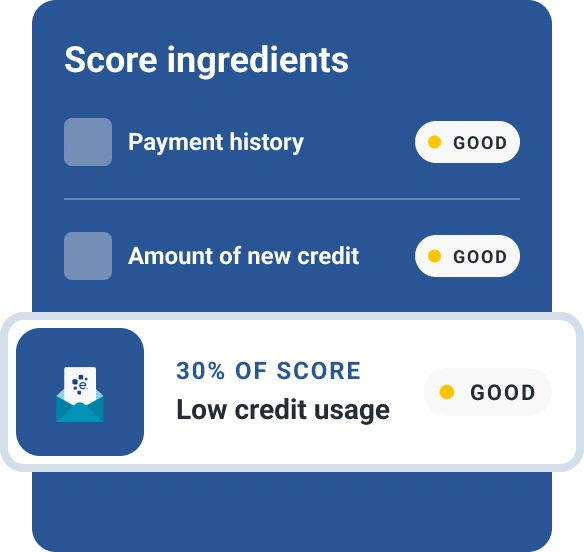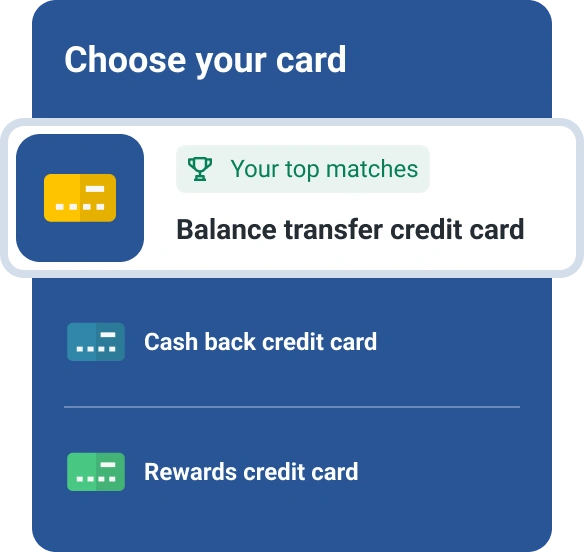Should I Complete a Balance Transfer?
Quick Answer
You may want to use a balance transfer if you can save more on interest than you’ll pay on balance transfer fees. But you’ll want to learn how the process works and consider the pros and cons before applying for a new card.

Moving your debt to a credit card could be a good idea. Depending on your offers, you may be able to save money by avoiding interest charges, and you might pay off your debt faster as a result. But consider the pros and cons—and comparison shop—before opening a new balance transfer credit card.
How Do Balance Transfers Work?
A balance transfer is when you transfer existing debt to a credit card, typically to save on interest or consolidate debt. The card issuer will either send payment to your other creditors or provide a check you can use to pay creditors. The transferred amount is added to your balance and you'll pay off the transferred balance, along with any purchases you make using the card, at your own pace.
Balance transfers can be helpful in two ways:
- You'll have fewer debts or accounts to keep track of each month.
- A card may offer a promotional lower or 0% annual percentage rate (APR) on balances you transfer to the card.
As a result, balance transfers can make it easier to manage and pay off your debt. However, you'll need to consider the potential limitations and fees to determine if it's the right approach.
Balance Transfer Pros and Cons
Some of the top pros and cons to consider before applying for a balance transfer card or requesting a transfer are:
Pros
- Fewer bills to manage. You'll have fewer bills and payments to make if you can completely pay off multiple balances with a balance transfer.
- Could save you money. Your new minimum payment may be lower than the combined minimum payments you had to make before. Plus, moving debt to a card that offers a promotional 0% APR on balance transfers lets you pay down the balance without accruing interest.
- Might come with a promotional rate on purchases. Some balance transfer offers also give you a 0% APR on purchases, which can save you money if you're using the card regularly.
Cons
- Could require good credit. If you're trying to get a new balance transfer card, your eligibility and credit limit could depend on your creditworthiness. Your card may have a balance transfer limit that's lower than your credit limit, and you won't know either limit until after you get the card. A good credit score and income could make qualifying and getting a higher limit easier.
- You may have to pay a fee. There's often a balance transfer fee, which is commonly 3% or 5% of the amount you transfer.
- There are limitations to consider. You may have to complete your balance transfers within a certain period to qualify for a promotional interest rate, and the rate only lasts for a limited promotional period. You also generally can't transfer balances between cards from the same issuer.
- It could lead to more debt. Paying down credit card balances increases your available credit, and you may be tempted to use your cards again and wind up with more debt overall.
How to Make a Balance Transfer
The exact process of transferring a balance will depend on your credit card and the type of balance you're transferring.
An important first step is to make a plan. Figure out which debts you want to transfer, how much you're likely to save and compare the savings to the fees you'll pay. You can also figure out how much you'll need to pay each month to pay off the balance before the promotional period ends, and set that as your payment goal.
Once you've got that settled, here's how a balance transfer generally works:
- Request a balance transfer. You request a balance transfer with the card issuer when opening a new credit card or with an existing card. You'll need to know how much you want to transfer and your other account's information, such as the creditor's name and your account number.
- Credit card issuer sends payment. After receiving your request, your card issuer sends a payment for the transferred amount to the other card issuer. You also may be able to transfer a balance to your bank account and then use the funds to pay down other types of debt, or use a check that's tied to your credit card to pay creditors directly.
- Wait for the transfer to be completed. It can take several weeks for your card issuer to approve and send the payment. Continue making payments on your other accounts until their balance is paid off to ensure you don't accidentally miss a payment. Also, verify that their balance is $0 (if you intended to pay them off) after the transfer is complete.
- Pay down your new balance. You'll now need to pay down the new balance on your credit card. Your card may have separate purchase and balance transfer balances, and each could have its own interest rate. Purchases may accrue interest if they aren't part of a promotional rate, and you may want to avoid using the card before paying off the transferred balance. Some cards let you avoid interest on purchases by paying down all your new purchases plus your minimum payment each month.
- Stick to the plan. You don't want to wind up transferring a balance and digging yourself deeper into debt. Try to stick to a budget and your payment goal and pay off as much of the balance as you can before the promotional rate ends.
Will a Balance Transfer Impact My Credit Score?
Many people open a new card that has a balance transfer offer when they want to transfer a balance. The long-term impact can be positive on your credit score if your new account is managed responsibly and you avoid racking up new debt, but there are some initial ups and downs.
Opening a new credit card often requires a hard inquiry, which might hurt your score a little. The new account will also lower the average age of your credit accounts, which could also be worse for your credit score.
However, opening a new credit card will also increase your overall available credit, which can lower your overall utilization ratio (your revolving debt versus credit limits) and may improve your credit score.
So, Should You Use a Balance Transfer?
With the pros and cons in mind, figuring out if a balance transfer is a good idea will depend on the offers you receive and whether you can avoid taking on more credit card debt.
If you decide a balance transfer card is a good option, be sure to find the right card for your needs, make all your payments on time and work to pay off your debt as quickly as possible. While you won't know the credit limits until after you apply, you can use a tool like Experian's card comparison tool to quickly compare balance transfer offers from different credit cards.
You can also start with a free credit report and score from Experian, which can help you estimate which credit cards you'll likely be approved for when you apply. And, you can get free score tracking to see how the balance transfer impacts your credit.
Best balance transfer cards
Need to consolidate debt and save on interest? See if you qualify for intro offers like 0% intro APR up to 21 months based on your FICO® Score.
See your offersAbout the author
Louis DeNicola is freelance personal finance and credit writer who works with Fortune 500 financial services firms, FinTech startups, and non-profits to teach people about money and credit. His clients include BlueVine, Discover, LendingTree, Money Management International, U.S News and Wirecutter.
Read more from Louis

